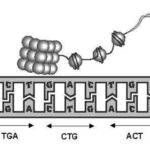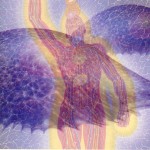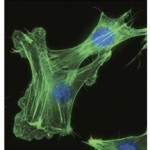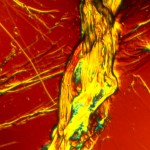Many years ago when I used to do cancer research I was surprised when people didn’t always fit into their statistical outcomes – some lived way beyond what their biology predicted, others who ‘should have lived’ based on the biology didn’t make it. I always thought that disease was all about biology and chemistry. What was the difference? Can we make a difference in the course of an illness?
In my evolving path as a medical scientist I began researching strategies to reverse cancer. At least in the lab we were able to make some leukemia(cancer of the white blood cells) cells take on normal cells’ traits. We didn’t know that much about gene involvement in cancer way back then. But some basic features of these malignant cells were transformed to normal cells – they became more fluid and their marks of maturity changed.
Fortunately scientists are making some of the most profound breakthroughs in cancer research and want to share a bit here for you to consider the possibilities.
First of all, our biological understanding about cancer – its due to genetic mutations, not failures of the immune system. and that the cells have numerous ways to change those genes. There are potent DNA repair programs, gene programs that trigger cell death, and of course the new idea of epigenetics – how our lifestyle can change the expression of our genes.
We have also learned that the mechanical tensions on a cell affect how it will express its genes. This activity is a function of the matrix or cytoskeleton of the cell – Strings and struts balance tensions. The above diagram from Slim Films illustrates this fabric of our cells. Dr. Donald Ingber at Harvard University was the first to show how different states of mechanical tension placed on the cell, triggers which genes are expressed.
When pulled taut and tight, the cell uses its “produce more genes” and keeps on reproducing. When the cell lets go of some its tension, softening up a bit, other genes go into action and the cell transforms to its more mature non-reproductive self. And when all physical tension is released by the cell, a third set of genes is expressed and the cell balls up and dies.
What we know about cells in the lab – the stiffness of the environment in which they live, or are placed in, influences which genes are expressed. The surface they’re placed on, whether it is rigid or soft, affects the genetic activities of the cell. These could be genes that tell the cells to reproduce, while other genes tell them to mature, and yet another set tells them to let go and die. Cells have the ability to surrender and program a gentle death. And in the lab scientists have discovered that by putting cancer cells on a rigid matrix they keep making more cells. Yet when they were put on a soft surface, the cancer cells stopped growing, they changed what they were doing and expressed another genetic program.
 We know that cells have the ability to turn off genes. They select which ones to use at a given moment. Remember every cell in your body has the same genes but don’t use them all. For example, heart cells turn off the genes that the liver needs to function.
We know that cells have the ability to turn off genes. They select which ones to use at a given moment. Remember every cell in your body has the same genes but don’t use them all. For example, heart cells turn off the genes that the liver needs to function.
Here’s also where the exciting new field of epigenetics comes into play. What we do now can make our cells change their behaviors. The actual genetic structure won’t change, but which genes come into play can be. Future offspring of pregnant moms can also be influenced by what mom does now, generations down the road.
We can change how genes express themselves in the lab but can we do that in our bodies?
Can we do that with cancer cells?
Must we wait for laboratory scientists to prove the possibilities and mechanics? Can we use our inner wisdom and resources to provide an environment for dangerous cells to transform their direction? I am not saying that our tensions or what we think or imagine causes or cures cancer. I am just offering a look into science that may support the spirit.
Cells stretched tight initiate the grow genes. Cells that let go of some of their tension stop growing and other genes come into play. Could we let go of our physical tensions and have our cancer cells turn off their grow genes?
That’s not to say that being tense causes cancer yet biologically softening tension in the test tube changes gene expression of normal cells. Many people use imagery to work with their disease. Imagination may set up new healing. You may have experienced imagery in your own life – dreams, worry, meditation, focusing on a future event or a past joy. Imagery can be a powerful doorway into your cellular wisdom. So I am offering this brief ‘script,’ if you are so inclined to try it out.
Always give yourself the message that whatever you experience does no harm.
Take some time to enter the inner space of your body. Close your eyes, let your breath move deeper into your belly and lungs. Breathe so that you receive the life-giving oxygen your cells need.
Now imagine yourself as one giant cell sensing the core of your cell self, breathing to it and then sensing the outside edges of this cell self. If you know there are abnormal cells hiding in your body or suspect such a thing, imagine or sense these cells. And just breathe normally.
When you feel ready imagine or pretend that those abnormal cells become less rigid. Instead of holding tight to the tissue where they are spending time, they soften up as if they are on a soft mattress. The genes in these cells are now tweaked and unable to reproduce anymore. Instead not finding their tight anchor they turn on their ‘time to die’ genes. If they have lost those death genes, they instead turn on the genes that let them become normal healthy cells. Allow yourself to experience the inner journey of these cells for as long as you like.
Again when ready, bring your awareness and breath back to your cell self. And begin humming mmmmm to fill the space with healing energy where the cancer or abnormal cells have been. You don’t have to know specifics of where they were or what they look like just know that you and they are letting go of the holds they have on your body and spirit. Hum, drum, ring a Tibetan bowl to fill you with light and love. Thank your cells for taking such good care of you and thank those cells for changing their mind to take on a new program.
What can we do that contributes to our own healing? If you would like to learn more, come join us at my next workshop on April 18, 2015.



